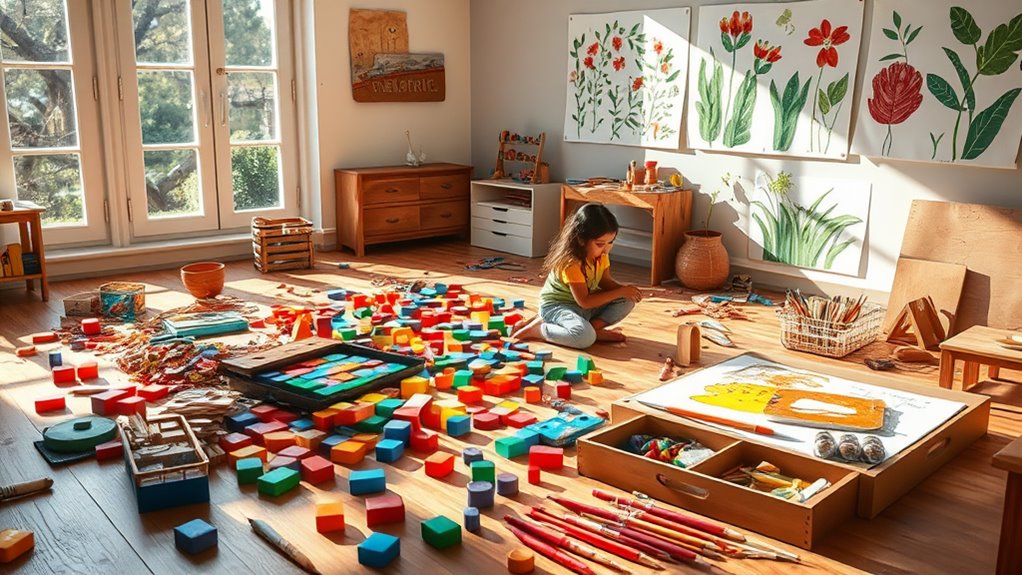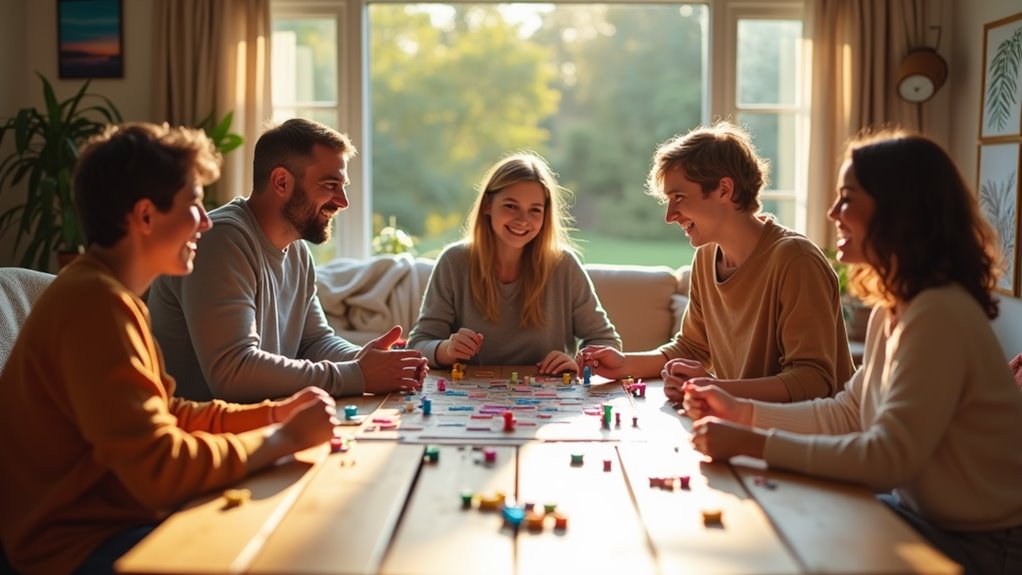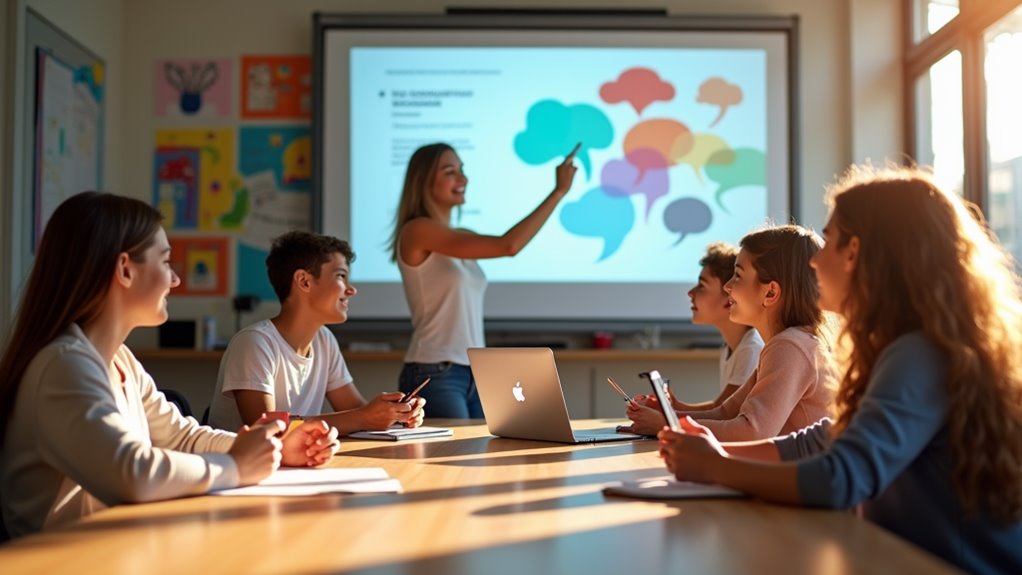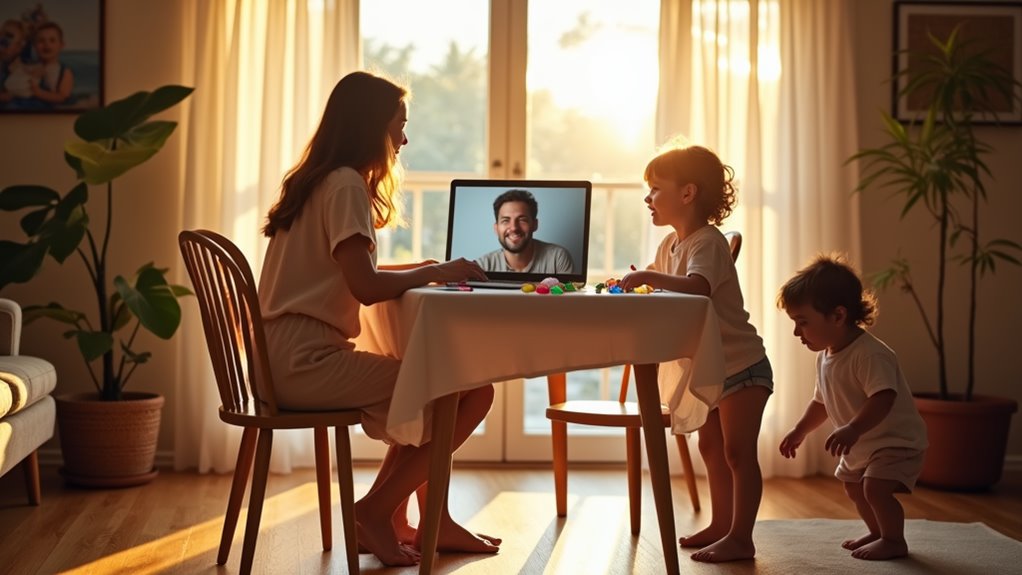Montessori Parenting- Fostering Creativity and Critical Thinking
When you consider Montessori parenting, you might realize how it emphasizes creativity and critical thinking through child-led exploration. By creating an environment rich with diverse materials and opportunities for hands-on learning, you’re not just facilitating play; you’re also fostering independence and curiosity. Observing your child as they navigate their interests can reveal their unique strengths, but there’s more to this approach than meets the eye. Exploring how these principles manifest in everyday life could change the way you view parenting entirely. What might that look like for you and your child?
Understanding Montessori Principles
Montessori principles offer a revitalizing approach to parenting that emphasizes independence and respect for a child’s natural development. At the heart of this method is the idea that children learn best when they’re allowed to explore their interests at their own pace.
You’ll want to create an environment that encourages curiosity and self-direction. This means providing a safe space filled with materials that inspire learning, like books, art supplies, and hands-on activities.
Additionally, respecting your child’s choices fosters their confidence and decision-making skills. Instead of dictating what they should do, ask open-ended questions that let them express their thoughts. This helps them develop critical thinking and problem-solving abilities.
Another key principle is observation. By closely watching how your child interacts with their environment, you can identify their interests and needs. This insight allows you to tailor your support, guiding them toward new challenges while also giving them the freedom to explore independently.
Incorporating these principles into your parenting can lead to a more harmonious relationship, where your child feels valued and empowered.
Embrace the journey, and enjoy the incredible growth that comes with it!
The Role of Hands-On Learning
Hands-on learning plays an essential role in the Montessori approach, as it allows children to engage with materials in a tactile, meaningful way. When kids can touch, manipulate, and experiment with different objects, they foster a deeper understanding of concepts. This method encourages exploration and creativity, helping them to connect what they’re learning with real-life experiences.
By using hands-on activities, you’re inviting your child to become an active participant in their own education. Whether it’s pouring water, sorting objects, or building structures, these activities enhance their fine motor skills and cognitive abilities. You’ll notice how engaged they become when they’re allowed to learn through play; it’s often where the magic happens!
Moreover, hands-on learning promotes critical thinking. As your child navigates challenges with materials, they learn to solve problems and think independently. It’s about nurturing curiosity and allowing them to ask questions, paving the way for lifelong learning.
In this way, incorporating hands-on activities into your parenting not only aligns with Montessori principles but also creates a dynamic learning environment that sparks joy and discovery. Embrace this approach, and watch your child thrive as they explore their world!
Encouraging Child-Led Exploration
Fostering a learning environment where children take the lead can considerably enhance their educational experience. When you encourage child-led exploration, you’re giving your child the opportunity to pursue their interests and learn at their own pace. This approach helps them develop critical thinking skills and creativity. Instead of directing their play or learning, let them choose activities that spark their curiosity.
You can set up a variety of materials and resources around your home or classroom, allowing your child to engage with what excites them most. For example, if they show interest in nature, provide books, magnifying glasses, and art supplies to explore that theme. Let them ask questions and seek answers, encouraging a sense of independence and confidence in their learning journey.
Also, be prepared to step back and observe. It’s okay to offer guidance, but try not to take over. Your role is to support their discoveries, not dictate them. By doing this, you’ll find they become more motivated and enthusiastic about learning.
Ultimately, child-led exploration nurtures a love for knowledge that lasts a lifetime, paving the way for self-directed learners who thrive in various environments.
Creating a Supportive Environment
Creating a supportive environment is essential for nurturing a child’s growth and development. When you cultivate a space that encourages exploration and creativity, your child feels safe to express themselves.
Start by organizing your home to promote independence. Make certain that materials and toys are easily accessible, allowing your child to choose what they want to engage with.
Consider the atmosphere, too. Soft lighting, comfortable seating, and calming colors can make a significant difference in how your child feels in their space.
Create areas for different activities, such as reading, arts and crafts, or quiet reflection. This variety encourages your child to explore their interests and develop critical thinking skills.
Encourage open communication by listening to your child’s thoughts and ideas. When they feel heard, it boosts their confidence and creativity.
Additionally, be mindful of the messages you convey. Celebrate their efforts, not just their achievements. This approach fosters resilience and a love for learning.
Promoting Open-Ended Play
Encouraging open-ended play is essential for your child’s development, as it sparks creativity and imagination. When you provide your child with materials that can be used in various ways, like blocks, art supplies, or even household items, you’re inviting them to explore their ideas freely. This type of play isn’t just about having fun; it nurtures critical thinking as they experiment and discover.
You might notice that your child creates their own rules or stories during playtime. These moments are opportunities for them to express themselves and develop a sense of autonomy. Instead of directing their play, let them take the lead. Sit back and watch as they transform a simple cardboard box into a spaceship or a fortress.
It’s important to create a space that encourages this exploration. Clear out an area where your child can spread out their materials without worrying about making a mess.
Remember, open-ended play isn’t about specific outcomes; it’s about the journey of discovery. By fostering an environment rich in possibilities, you’re helping your child build skills that will benefit them throughout their life.
Developing Problem-Solving Skills
Problem-solving skills are essential for your child’s growth and independence. In a Montessori environment, you can nurture these skills by providing opportunities for your child to face challenges and find solutions on their own. When children encounter obstacles, encourage them to think critically. Instead of immediately stepping in to help, ask guiding questions that prompt them to explore different options. This approach allows them to develop confidence in their abilities.
Incorporate activities that promote problem-solving, like building with blocks or working on puzzles. These tasks require your child to strategize and assess their choices, enhancing their analytical thinking.
Offer open-ended projects, where there isn’t just one right answer. This encourages creativity and helps your child learn to navigate uncertainty.
Celebrate your child’s efforts and progress, regardless of the outcome. By fostering a growth mindset, you help them understand that mistakes are part of learning.
Nurturing Emotional Intelligence
As your child develops their problem-solving skills, it’s equally important to nurture their emotional intelligence. Emotional intelligence helps kids understand their feelings and the feelings of others, which is essential for building strong relationships.
Start by encouraging your child to express emotions openly. Ask them how they feel about different situations, and listen actively to their responses. This practice not only validates their feelings but also fosters self-awareness.
You can also model empathy by discussing your own emotions in relatable situations. When you share your feelings, it teaches your child to recognize and articulate their own.
Role-playing different scenarios can further enhance this understanding. For example, you might act out a disagreement and explore how each person might feel, guiding your child to contemplate perspectives beyond their own.
Lastly, create a safe space for your child to practice emotional regulation. Teach them calming techniques, like deep breathing or counting to ten, to help manage overwhelming feelings.





